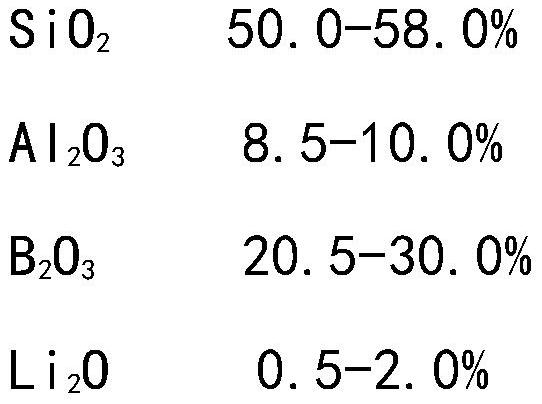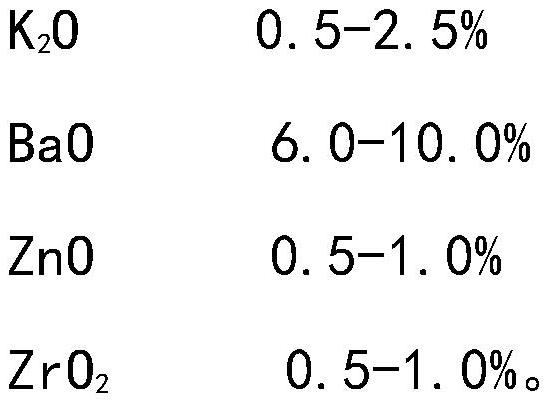A kind of deep ultraviolet glass and its preparation method, application and melting device
A UV and glass technology, applied in glass manufacturing equipment, glass furnace equipment, glass forming, etc., can solve the problems of small geometry, no practical value, large difference in thermal expansion coefficient of Kovar alloy, etc.
- Summary
- Abstract
- Description
- Claims
- Application Information
AI Technical Summary
Problems solved by technology
Method used
Image
Examples
preparation example Construction
[0047] The present invention also provides a method for preparing the above-mentioned penetrating deep ultraviolet glass, comprising the following steps:
[0048] (1) Iron removal and conversion: the raw materials are subjected to iron removal treatment, then the high-purity raw materials are proportioned according to the designed components, and the corresponding raw material weights are converted according to the weight percentage of each component, and then each raw material is weighed;
[0049] The main raw materials are subjected to iron removal treatment to improve the purity of glass raw materials, because the harmful impurities in UV-transparent glass mainly come from transition metal oxides, which have a strong absorption effect on deep ultraviolet rays due to their relatively rich energy band structure; Strictly control the batching utensils during the batching process to avoid introducing new impurities in the process. The materials used in the batching operation, su...
Embodiment 1
[0070] At first, select glass raw material according to table 1 embodiment 1 glass composition, raw material requirement, quartz sand (high purity, 150 μ m sieve is below 1%, 45 μ m sieve is below 30%, Fe 2 o 3 content less than 1PPm), boric anhydride (400μm sieve is less than 10%, 63μm sieve is less than 10%), aluminum acetate (analytical pure), lithium carbonate (analytical pure), potassium carbonate (analytical pure), barium carbonate (analytical pure), zinc oxide (analytical pure), zirconia (analytical pure) and the main raw materials in the glass raw materials are subjected to iron removal treatment to improve the purity of the glass raw materials, and the oxides of variable valence elements such as Fe 2 o 3 etc. are strictly controlled, and the finished glass Fe 2 o 3 The content is less than 1PPm. Before batching, the main raw materials need to be dehydrated by high-temperature burning; then the high-purity raw materials are proportioned according to the glass chemic...
Embodiment 2
[0072] The actual composition of the glass refers to Example 2 in Table 1, using the same raw materials and raw material requirements as in Example 1, and taking the mixture into the platinum crucible of the melting device, and then heating it in a glass melting furnace at 1200 ° C for 50 minutes Then continue to heat up to 1600 ℃ melting process system and the test condition identical with embodiment 1 with the heating rate of 5 ℃ / min to 1600 ℃ for 4 hours, the basic performance of sample is shown in table 1. (1) When the wavelength is 185nm, the ultraviolet light transmittance reaches 57.3%; (2) The average linear expansion coefficient of 30-300°C is 48×10 -7 / °C.
PUM
| Property | Measurement | Unit |
|---|---|---|
| Average linear expansion coefficient | aaaaa | aaaaa |
| Average linear expansion coefficient | aaaaa | aaaaa |
| Average linear expansion coefficient | aaaaa | aaaaa |
Abstract
Description
Claims
Application Information
 Login to View More
Login to View More - R&D
- Intellectual Property
- Life Sciences
- Materials
- Tech Scout
- Unparalleled Data Quality
- Higher Quality Content
- 60% Fewer Hallucinations
Browse by: Latest US Patents, China's latest patents, Technical Efficacy Thesaurus, Application Domain, Technology Topic, Popular Technical Reports.
© 2025 PatSnap. All rights reserved.Legal|Privacy policy|Modern Slavery Act Transparency Statement|Sitemap|About US| Contact US: help@patsnap.com



